News
Fourteen Things You Should Celebrate About Papahānaumokuākea Marine National Monument
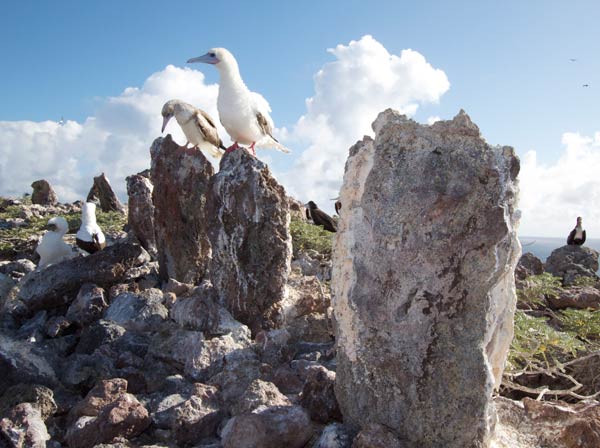
We’re celebrating PMNM’s 14th anniversary. Here are 14 things we’d like you to know about the monument!
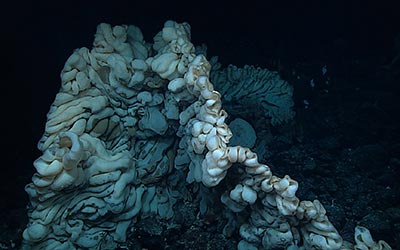
1. It has the biggest known sponge in the world
The massive sponge was discovered during a research dive at 7,000 feet, and is close to 12 feet long and seven feet wide.
2. It’s the location of the world’s biggest volcano
Pūhāhonu (Gardner Pinnacles), Hawaiian for “turtle surfacing for air,” is a long-extinct shield volcano—a broad dome that rises about 4,500 meters from the sea floor from a single source of molten rock. Researchers recently reported that Pūhāhonu, located in the monument, contains 150,000 cubic kilometers of rock, making it the biggest volcano by volume in the world.
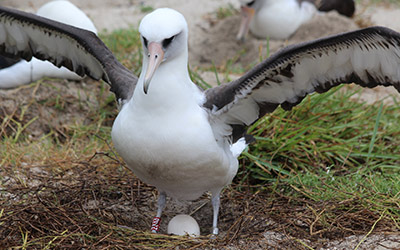
3. It has the world’s oldest known wild bird
Wisdom, a Laysan albatross and the world’s oldest known, banded wild bird, returns annually to Midway Atoll National Wildlife Refuge in the monument. Wisdom is at least 69 years old and has hatched more than 35 chicks over the course of her life!
4. Many Native Hawaiian ceremonial sites are located in the monument
The island of Mokumanamana is about 0.2 km2 and has 52 documented archaeological sites which includes 33 religious ritual sites. The island of Nihoa is about 0.7 km2 and has 89 documented archaeological sites which includes 18 religious ritual sites. These islands represent two of the highest densities of Native Hawaiian cultural or archaeological sites in the Hawaiian Archipelago. Today, Native Hawaiians continue to access these sites to perpetuate their culture and religious beliefs.
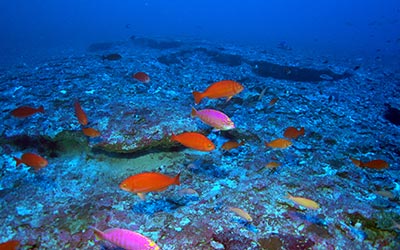
5. The monument has the highest level of endemism of any known marine ecosystem on Earth
Endemic species are those found nowhere else in the world. Deep coral reef fish communities at Kure Atoll in the monument are composed of all Hawaiian endemic fishes, the highest level of endemism known from any marine ecosystem on Earth.
6. The historic Battle of Midway took place in the monument
Midway Atoll National Wildlife Refuge, now home to millions of nesting seabirds, once was the site of the Battle of Midway during World War II. Surrounding waters are now the resting place for shipwrecks and submerged aircraft lost during the war years.
7. It’s home to the oldest marine organism in the world
A deep-sea black coral that can live up to 4,500 years was found at depths of 1,000- 1,600 feet in the monument.
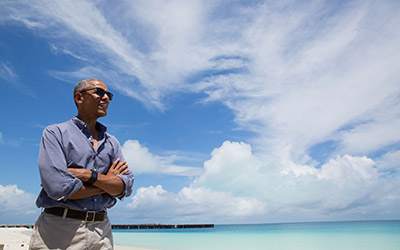
8. Six presidents over more than 100 years have taken action to protect this special place
In 1903, President Theodore Roosevelt placed Midway Atoll under control of the Navy. In 1909, he created the Hawaiian Islands Bird Reservation. In 1940, President Franklin D. Roosevelt changed the name to the Hawaiian Islands National Wildlife Refuge - managed by the U.S. Fish & Wildlife Service - and broadened refuge purposes to protect all wildlife. In 1988, President Ronald Reagan signed legislation assigning stewardship responsibilities for Midway Atoll to the U.S. Fish & Wildlife Service. President William J. Clinton transferred Midway Atoll management in 1996 from the U.S. Navy to the U.S. Fish & Wildlife Service. In 2000, he designated the Northwestern Hawaiian Islands Coral Reef Ecosystem Reserve. In 2006, President George W. Bush established the Northwestern Hawaiian Islands Marine National Monument, and in 2016, President Barack Obama signed a proclamation expanding PMNM.
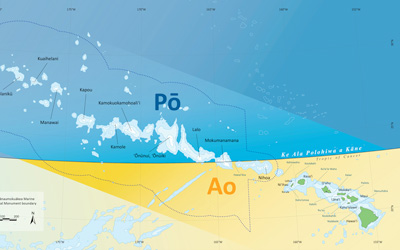
9. Mokumanamana in the monument sits near the Tropic of Cancer
Mokumanamana sits near the Tropic of Cancer, a circle of latitude around the Earth that marks the northernmost position where the sun is observed at the zenith, the point directly above the observer, on the summer solstice, the longest day of the year in the Northern Hemisphere. This has significance in Hawaiian cosmology, non-instrument navigation, and traditional cultural ceremonies. In Hawaiian, the path of the sun along the Tropic of Cancer is called "ke alanui polohiwa a Kāne," or "the black shining road of Kāne the god of the sun." This boundary divides the Hawaiian Archipelago into two realms known as Pō and Ao, which literally means night and day. According to the Hawaiian creation chant Kumulipo, Pō is the realm of spirits and gods and Ao is the realm of the living. As the westernmost place in the Hawaiian Archipelago, many believe the islands and seas of Papahānaumokuākea are the pathway that spirits travel after death, returning to Pō.
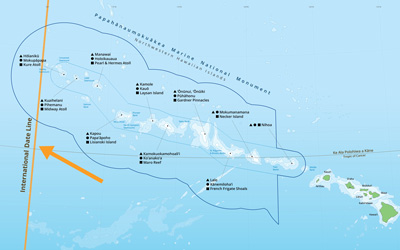
10. The monument spans the International Date Line
The International Date Line, established in 1884, passes through Papahānaumokuākea and roughly follows a 180 degrees longitude north-south line on the Earth. The International Date Line functions as a “line of demarcation” separating two consecutive calendar dates. When you cross the date line, you become a time traveler of sorts! Cross to the west and it’s one day later; cross back and you’ve “gone back in time."
11. It is the only mixed UNESCO World Heritage site in the United States
On July 30, 2010, delegates to the UNESCO World Heritage Convention agreed to inscribe Papahānaumokuākea Marine National Monument as one of only 39 mixed (natural and cultural) World Heritage Sites in the World, and the only one in the U.S.
12. The monument is identified as a Particularly Sensitive Sea Area (PSSA) on every nautical chart of the world
Papahānaumokuākea was designated a PSSA in 2008 by the International Maritime Organization, to protect marine resources of ecological or cultural significance from damage by ships while helping keep mariners safe.
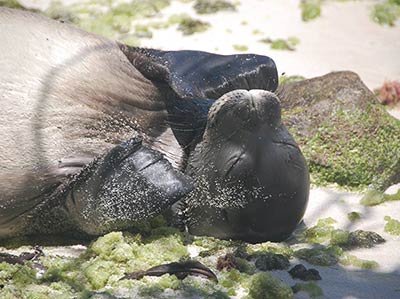
13. Papahānaumokuākea is home to one of only two monk seal species remaining in the world
There are about 1,400 Hawaiian monk seals remaining (1,100 in the NWHI, and 300 in the main Hawaiian Islands), and 600-700 Mediterranean monk seals left in the wild. The Caribbean monk seal was last seen in 1952, and was declared extinct in 2008 after an exhaustive search.
14. Papahānaumokuākea Marine National Monument is co-managed cooperatively by seven agencies
NOAA Office of National Marine Sanctuaries, NOAA Fisheries, U.S. Fish and Wildlife Service Ecological Services, U.S. Fish and Wildlife Service Refuges, State of Hawaiʻi Division of Aquatic Resources, State of Hawaiʻi Division of Forestry and Wildlife, and the Office of Hawaiian Affairs.


